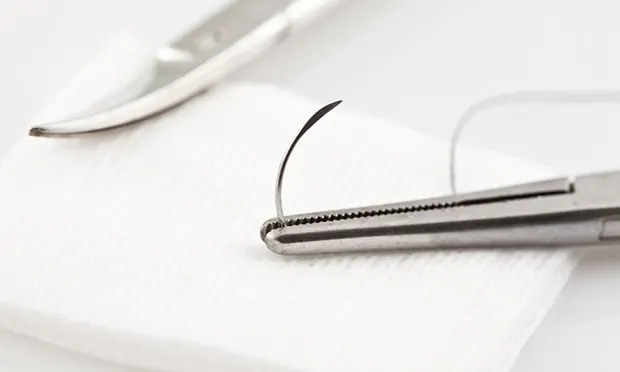Cinching Suture Comparisons

Despite widespread use of various suture materials, patterns, and knots, there are few comparisons of basic suture properties and performance. This in vitro mechanical study investigated 11 types of absorbable and nonabsorbable suture materials using 3 different knot patterns and 5 different knot sizes tied by 2 individuals of varied experience.
When testing tensile failure load, 1 of 2 braided sutures (lactomer [Polysorb, covidien.com]) was strongest; monofilament polyglytone 6211 (Caprosyn, covidien.com) was weakest. For polyglactin 910 (Vicryl, novartis.ethicon.com), nylon (Ethilon, novartis.ethicon.com; Monosof, covidien.com), polyglytone 6211, and polypropylene (Surgipro, covidien.com), knots made using 3 throws were statistically as secure as knots using up to 6 throws. For all remaining sutures, polydioxanone (PDS II, novartis.ethicon.com), polypropylene (Prolene, novartis.ethicon.com), polyglecaprone 25 (Monocryl, novartis.ethicon.com), lactomer, and glycomer (Biosyn, covidien.com), knots using 4 throws were similar to 6 throws. There were no significant differences between simple interrupted knots and knots at the beginning of simple continuous patterns; however, both were less likely to fail than knots at the end of simple continuous patterns. Knots tied by a board-certified surgeon were more secure than those tied by a fourth-year veterinary student.
Commentary
Suture is arguably the most common surgical material; thus, it would seem prudent to have objective data from comparative studies to direct material choice and technique. Interesting differences were noted in the number of throws to create a secure knot; 3 or 4 throws were mechanically similar to 6 throws in all suture types. This contradicts the dogma of 6 to 7 throws for knots of holding layers or continuous patterns. The end knot of a continuous pattern, which uses a loop to tie the knot, was weaker than the start knot and an interrupted knot. This is relevant and readily apparent as it is the most common site for knot failure, particularly for trainees. This, combined with the significant effect of surgeon experience, reinforces the adherence and practice of fundamental principles to minimize preventable surgical errors when tying sutures.—Jason Bleedorn, DVM, DACVS
Source
Knot security and tensile strength of suture materials. Marturello DM, McFadden MS, Bennett RA, et al. VET SURG 43:73-79, 2014.